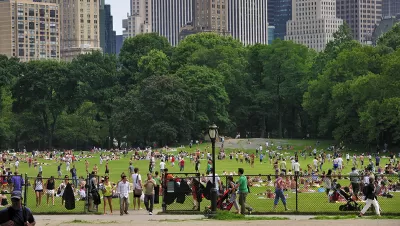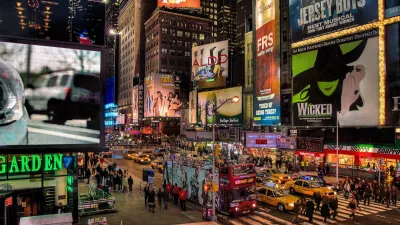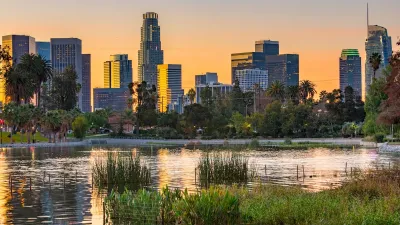A new study by the Trust for Public Land identifies the benefits and fiscal impacts of public parks and open spaces in New York City.

New York City is home to some of the world’s most iconic parks, including the 843-acre Central Park, which offer a wide range of benefits to residents and visitors. But what exactly are the system-wide benefits conveyed by all of these parks? To help answer this question, the Trust for Public Land (TPL) recently released a report entitled The Economic Benefits of Parks in New York City. While previous studies have investigated the economic impact of individual parks, this new report is the first benefit study of the city’s entire integrated park system.
To prepare The Economic Benefits of Parks in New York City, a team of economists, specialists, and research partners used geographic information system (GIS) technology to measure the fiscal impacts of city, state, and federal parks within NYC. The report explains how parks lower healthcare costs for people who exercise there, provide natural air and water filtration, increase property values, and promote tourism while serving as a place for people to connect with nature.
As Sunny Fleming and David LaShell explain in this article on the Esri Blog, the project was no small task. NYC maintains over 48,000 acres of parkland across the city’s five boroughs, making parks a valuable public asset and a critical part of the city’s infrastructure. New York State also maintains important recreational assets like Shirley Chisholm State Park; the National Park Service oversees iconic places like Liberty Island and Grant’s Tomb; and there are many multi-jurisdictional parks like Governors Island and Hudson River Park.
To learn more about the study, including how it is already impacting policy and funding decisions, please read the source article.
FULL STORY: The Economic Value of Parks: NYC

Manufactured Crisis: Losing the Nation’s Largest Source of Unsubsidized Affordable Housing
Manufactured housing communities have long been an affordable housing option for millions of people living in the U.S., but that affordability is disappearing rapidly. How did we get here?

Americans May Be Stuck — But Why?
Americans are moving a lot less than they once did, and that is a problem. While Yoni Applebaum, in his highly-publicized article Stuck, gets the reasons badly wrong, it's still important to ask: why are we moving so much less than before?

Using Old Oil and Gas Wells for Green Energy Storage
Penn State researchers have found that repurposing abandoned oil and gas wells for geothermal-assisted compressed-air energy storage can boost efficiency, reduce environmental risks, and support clean energy and job transitions.

Greening Oakland’s School Grounds
With help from community partners like the Trust for Public Land, Oakland Unified School District is turning barren, asphalt-covered schoolyards into vibrant, green spaces that support outdoor learning, play, and student well-being.

California Governor Suspends CEQA Reviews for Utilities in Fire Areas
Utility restoration efforts in areas affected by the January wildfires in Los Angeles will be exempt from environmental regulations to speed up the rebuilding of essential infrastructure.

Native American Communities Prepare to Lead on Environmental Stewardship
In the face of federal threats to public lands and conservation efforts, indigenous groups continue to model nature-centered conservation efforts.
Urban Design for Planners 1: Software Tools
This six-course series explores essential urban design concepts using open source software and equips planners with the tools they need to participate fully in the urban design process.
Planning for Universal Design
Learn the tools for implementing Universal Design in planning regulations.
Heyer Gruel & Associates PA
City of Moreno Valley
Institute for Housing and Urban Development Studies (IHS)
City of Grandview
Harvard GSD Executive Education
Salt Lake City
NYU Wagner Graduate School of Public Service
City of Cambridge, Maryland





























